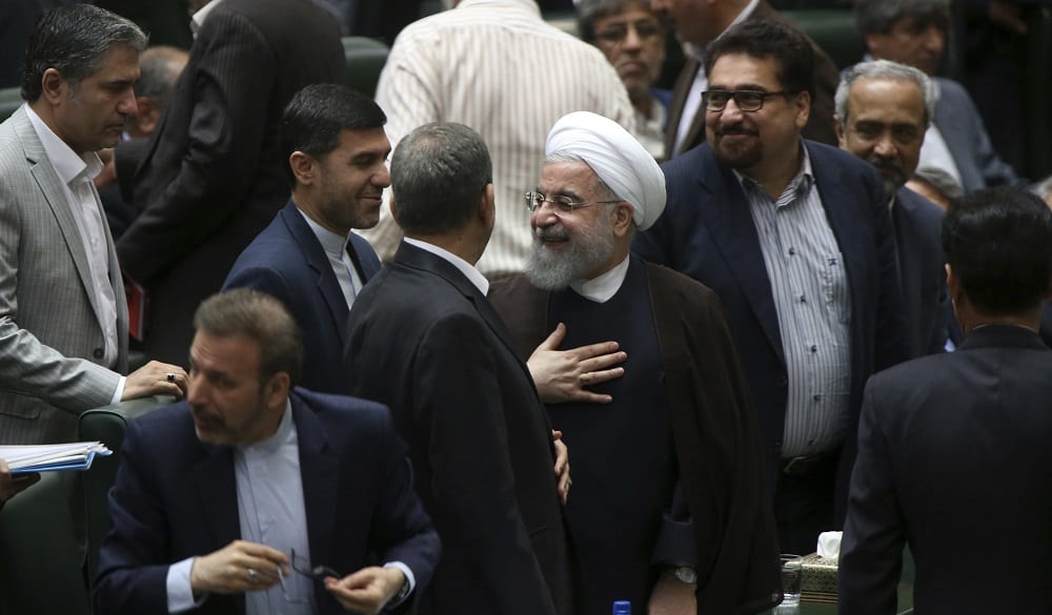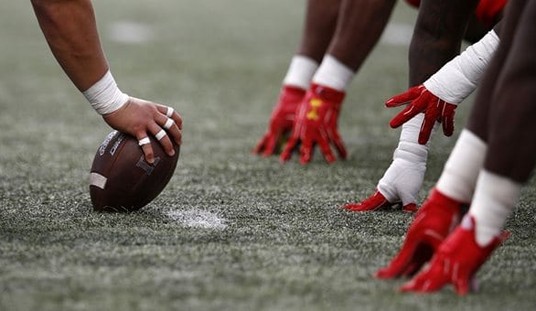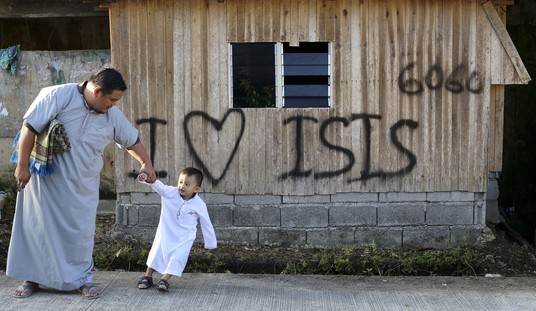
Iranian President Hassan Rouhani, center, leaves the parliament after his speech in a session to debate his proposed cabinet, in Tehran, Iran, Tuesday, Aug. 15, 2017. Iran’s president issued a direct threat to the West on Tuesday, claiming his country is capable of restarting its nuclear program within hours — and quickly bringing it to even more advanced levels than in 2015, when Iran signed the nuclear deal with world powers. (AP Photo/Vahid Salemi)
NBC is reporting, citing several sources, that President Trump will refuse to certify that Iran is in compliance with the terms of the nuclear deal, the JCPOA, and he will do so before the October 15 deadline to report to Congress on Iran’s performance.
President Trump is leaning toward decertifying the Iran nuclear deal and putting the decision of whether the U.S. will withdraw from the accord in the hands of Congress, according to four sources — including one senior administration official — familiar with the White House deliberations.
Such a move would come prior to an Oct. 15 deadline and would trigger a 60-day window for lawmakers to determine whether to reimpose sanctions related to Iran’s nuclear program that were lifted as part of the 2015 agreement. The president’s goal during that time is to prod America’s European allies, who are part of the nuclear deal, to agree to renegotiate some provisions, and pressure Iran back into talks.
Still, several of the sources caution the president could change his mind over the next three weeks as he faces pushback from allies internationally.
When Teresa May of US ally & Iran Deal signatory U.K. asked Trump for his decision on recertification, he refused to share, says Tillerson
— Jim Sciutto (@jimsciutto) September 21, 2017
Secretary of State Rex Tillerson=>"Iran failed expectation of deal to seek more peaceful stable region"! https://t.co/ILpxHMMwZ2
— GITMO KAG2020 🇺🇸 (@President1Trump) September 21, 2017
As I posted a few days ago, Trump has several paths he could take on certification:
These are the options and there are factions in the government in favor of all of them:
1 – Decertify and stay in the deal, then focus on Congressional action — this is the mainstream “waive & slap then decertify & fix” option. It came out of policy shops like FDD and ISIS, and was outlined last week by Ambassador Haley. The deal should be decertified because it fails condition 4 (it’s not “vital to national interest”) and/or condition 1 (Iran is not “fully implementing” the paragraph 28 of the JCPOA, the weapons and personnel prohibitions of UNSCR 2231, the military site access requirements of the Additional Protocol, etc. The administration would then use leverage created by the threat or reality of Congressional action to strengthen weaknesses in the deal.
2 – Decertify and stay in the deal, then threaten to reimpose secondary sanctions — this is a new option. It comes from a plan that’s been circulating but hadn’t been described before today’s AP story. Here’s the AP outline: “… decertify Iran and threaten to restore nuclear sanctions on Iran at any point as well as so-called “secondary sanctions” that could cut off European and other banks and businesses that do business with Iran from the U.S. financial system.” The administration would then threaten to get physical with banks unless the Iranians modified their behavior and agreed to strengthen the deal.
3 – Decertify and stay in the deal, then focus on executive action — Here’s the AP outline: “… have Trump issue a new executive order setting out a timeline for the agreement to be amended or supplemented with bans or further limitations on uranium enrichment and ballistic missile testing.” The administration would then use leverage created by the move to strengthen weaknesses in the deal.
4 – Decertify and withdraw from the deal — this option has been outlined and advocated most prominently by Amb Bolton. The argument is that the deal can’t be enforced or fixed. In August Bolton published a white paper charting the tactics and strategy that would be used to manage to withdrawal.
5 – Certify — this is the State Department option. Secretary Tillerson says he disagrees with the president on the Iran deal and the State Department is reportedly in “open war” against the White House on the issue. After the July certification, Iran deal advocates inside the State Department launched multiple open-ended initiatives to ‘test’ and ‘strengthen’ the deal, which would allow them to indefinitely argue that decertification is premature. This AP report says Tillerson presented the president with the latest version of State’s certification plan this week, which promised to pursue ‘fixes’ earlier this week.
According to NBC, Trump has added an additional course of action:
The senior administration official said the president has resolved not to continue the “status quo,” but that he’s considering at least one other option related to the deal.
That option, according to two officials, would give European allies the option of 90 days to get on board with renegotiation — rather than punt the decision to Congress. Administration officials are still in talks with those allies, and with Republicans on Capitol Hill.
Macron calls for new measures to be added to Iran deal https://t.co/w2zWq52USB pic.twitter.com/SJNlH48Ivh
— FRANCE 24 English (@France24_en) September 21, 2017
I don’t see this happening, not that the Euros won’t get on board but that Rouhani can’t politically survive the climb down that would be necessary for Iran to renegotiate the deal.
My personal view is that the best solution here is for Trump to declare Iran out of compliance and kick the matter to Congress. Hopefully, he can use that as an opportunity that will structure future sanctions against Iran in a way that requires Congressional approval of lifting/modifying them rather than giving the president carte blanche to lift sanctions, as was the case with Obama. Going forward will require close coordination between Congress and the White House and now is a good time to get everyone on the same sheet of music.
News: @RandPaul pushes for U.S. to stay in Iran nuclear deal as Trump hints he'll withdraw from it https://t.co/dNCW8zkUve
— Seung Min Kim (@seungminkim) September 20, 2017
Well, good luck with that.














Join the conversation as a VIP Member